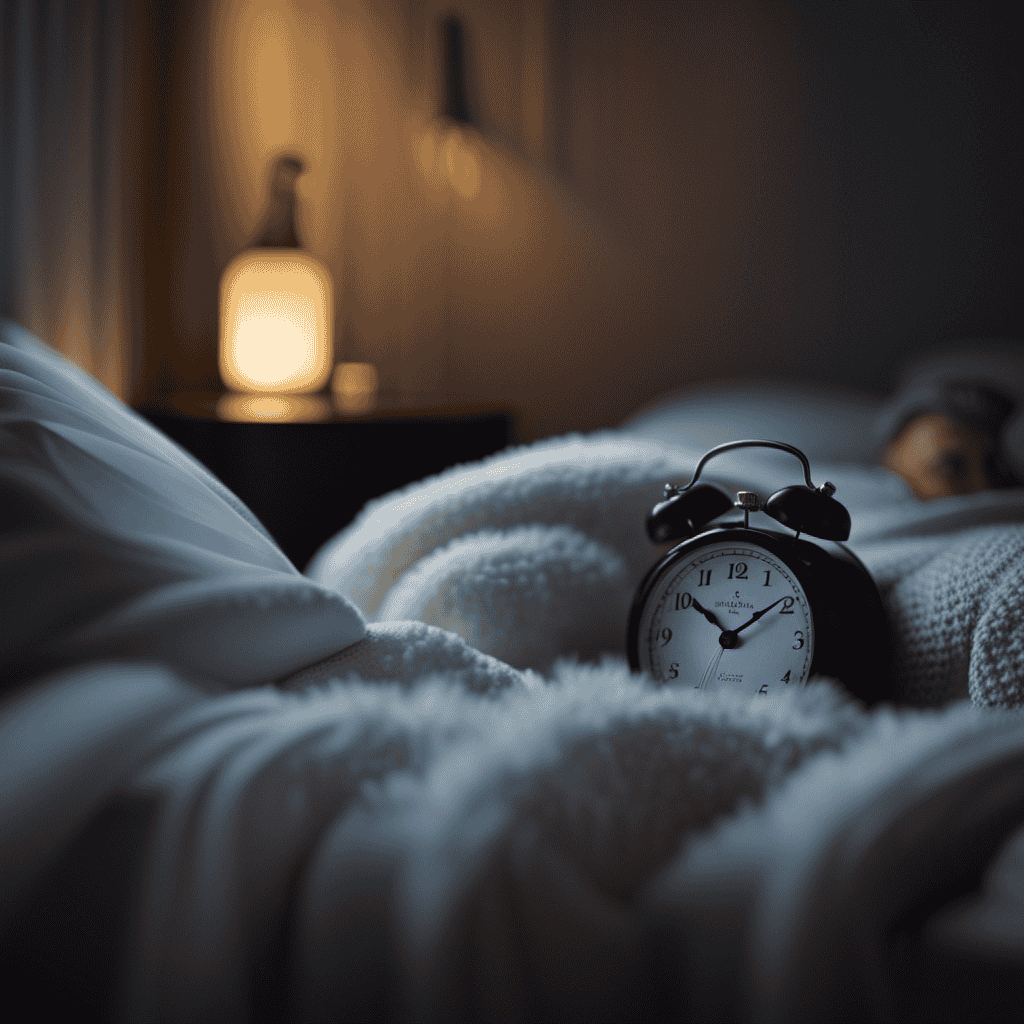Sleep, often seen as the perfect retreat from the real world, can at times prove hard to find.
But what if I told you there was a way to deceive others into thinking you’re peacefully slumbering, all while secretly enjoying the waking world?
Welcome to the world of faking sleep, where the art of deception reigns supreme.
In this article, we’ll explore the techniques, downsides, and potential risks of this intriguing practice.
So, prepare to enter the realm of illusion and discover the secrets behind mastering the art of faking sleep.
Key Takeaways
- Faking sleep is the act of pretending to be asleep while awake, often used to avoid conversations or seek alone time.
- Techniques for successfully faking sleep include keeping the body completely still, relaxing facial muscles, controlling breathing, and keeping the eyes closed.
- Faking sleep can have negative effects such as difficulty maintaining the act for a long time, potential sleep problems like insomnia, poor sleep quality, increased stress levels, and difficulty concentrating.
- Stillness, facial relaxation, and controlled breathing are important elements in successfully faking sleep, as they enhance the illusion of deep sleep and contribute to the deception of others.
What is it?
Faking sleep is the act of pretending to be asleep when I am actually awake, and it can be challenging to convincingly pull off. There are various reasons why someone might choose to fake sleep, such as wanting to avoid a conversation or simply needing some alone time.
However, it’s important to note that faking sleep is not an easy task. There are several signs that can give away the fact that a person is actually awake, such as slight movements, muscle tension, or irregular breathing patterns. To successfully fake sleep, one must keep their body still, relax their facial muscles, control their breathing, and keep their eyes closed. Props like a pillow or blanket can also enhance the illusion.
Despite its usefulness in certain situations, faking sleep can have downsides. It can be difficult to maintain the act for a long time and it may lead to sleep problems like insomnia or poor sleep quality. Increased stress levels and difficulty concentrating are also possible consequences. Additionally, faking sleep can result in irritability, impaired immune function, and an increased risk of accidents due to exhaustion.
Seeking professional help for long-term solutions is recommended if faking sleep becomes a regular habit. In conclusion, faking sleep requires skill and attention to detail, but it should be used cautiously to avoid potential negative effects.
Techniques for Faking Sleep
To convincingly pretend to be asleep, I focus on keeping my body completely still, relaxing my facial muscles, controlling my breathing, and keeping my eyes closed. These techniques help create the illusion of deep sleep. Here are three key elements of my strategy:
-
Stillness: I make sure not to move a muscle, as even the slightest twitch can give away my wakefulness.
-
Facial relaxation: I consciously loosen my facial muscles, allowing my expression to soften and appear more natural.
-
Controlled breathing: I take slow, steady breaths, mimicking the rhythm of someone in deep slumber.
By mastering these techniques, I am able to effectively deceive others into thinking I am sound asleep. However, it is important to remember that faking sleep can have negative consequences, such as poor sleep quality and increased stress levels.
Downsides of Faking Sleep
One major drawback of pretending to be asleep is the potential difficulty in maintaining the act over a long period of time. It requires constant vigilance to ensure that any movements or sounds made do not betray the pretense. The longer the act is sustained, the higher the chances of slipping up and being caught. This can lead to embarrassment, loss of trust, and even strained relationships.
Additionally, faking sleep can disrupt one’s natural sleep patterns and potentially lead to sleep problems like insomnia. The quality of sleep may also be compromised, resulting in feelings of fatigue and exhaustion.
Moreover, the stress of constantly pretending can take a toll on mental and emotional well-being, making it difficult to concentrate and increasing overall stress levels. It is important to consider these downsides and seek professional help for long-term solutions if necessary.
Frequently Asked Questions
How can faking sleep affect your relationships with others?
Faking sleep can negatively affect relationships by creating a sense of deception and mistrust. It can lead to difficulties in communication, emotional distance, and a lack of intimacy. Open and honest communication is essential for maintaining healthy relationships.
Can faking sleep lead to long-term sleep disorders?
Faking sleep can potentially lead to long-term sleep disorders. It can disrupt natural sleep patterns, cause insomnia, and result in poor sleep quality. Seeking professional help is recommended for finding long-term solutions.
Are there any psychological effects of consistently faking sleep?
Consistently faking sleep can have psychological effects. It’s like wearing a mask, hiding our true selves. Over time, this deception can lead to feelings of disconnection, loneliness, and even identity confusion. It’s important to prioritize genuine rest for our mental well-being.
Does faking sleep have any impact on memory or cognitive function?
Faking sleep can have an impact on memory and cognitive function. By not getting proper rest, it can lead to difficulties in concentration and memory recall. It is important to prioritize real sleep for optimal cognitive function.
Are there any legal consequences for faking sleep in certain situations?
There are no legal consequences for faking sleep in most situations. However, in certain contexts, such as during court proceedings or while operating heavy machinery, it could potentially lead to legal issues or accidents.
Conclusion
In conclusion, faking sleep can be a challenging art to master, but it’s not a sustainable solution. Techniques like keeping still, relaxing facial muscles, and controlling breathing can help create the illusion. However, the downsides of faking sleep are significant.
Poor sleep quality and increased stress levels are just a few of the consequences. Faking sleep can also lead to impaired immune function and exhaustion, which can be detrimental to our overall well-being.
Instead of relying on deception, it’s crucial to seek professional help and find long-term solutions to address any underlying issues.










